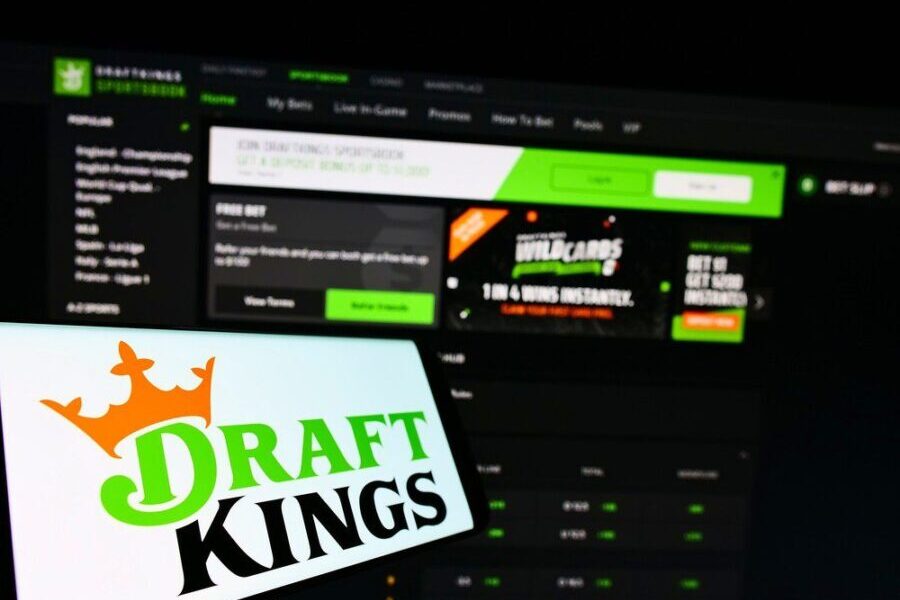DraftKings earnings call focuses on prediction markets and how new partnership with ESPN can be leveraged

DraftKings and ESPN on Thursday announced a partnership that will make DraftKings the sole official sportsbook and odds provider for ESPN, starting 1 December.
One might think that would be the emphasis of DraftKings’ investors call Friday morning. But instead, most analysts were curious about the launch of DraftKings Predictions.
“In the coming months, we expect DraftKings Predictions to enter many new states with sports event contracts, unlocking a new customer base and revenue stream,” DraftKings Chief Executive Jason Robins said in his opening remarks, noting that nearly half of the United States lacks access to legal online sports betting.
“We plan to focus on the states where we do not offer sports books, which is also where we believe the vast majority of the financial opportunity exists,” Robins added.
DraftKings on Thursday reported revenue of US$1.14 billion for the third quarter, an increase of US$49 million, or 4%, compared to US$1.095 billion during the same period in 2024.
DraftKings’ fiscal year 2025 revenue guidance is now US$5.9 billion-US$6.1 billion. The company’s updated guidance range equates to year-over-year growth of 24%-28% based on the company’s fiscal year 2024 revenue. Robins noted the revision is because of “customer friendly sports outcomes” that affected revenue by US$300 million, noting “there will be periods where we can meaningfully overperform or underperform our expectations based on these variances.”
“I think that’s just the nature of the business,” Robins added. “What we do is we certainly make sure we’re managing risk. If you look at the overall negative outcome we’ve experienced this year, it’s only around 5% of our total revenue. So obviously in a given quarter when a lot of that hits that can be meaningful. But from a risk management and from cash flow, and making sure that we’re still generating profit and liquidity, I think that that’s something that we always keep in mind.”
Robins declined to comment on DraftKings’ total investment in prediction markets saying there’s not enough data yet to determine that figure. But he insisted that the company would not spend foolishly.
“If we find that we’re not able to get the kinds of returns that we want, then we won’t do it,” Robins said. “The other thing I will say is that because we have such a great presence across the sports and media landscape already, we don’t think there needs to be a ton of incremental spend, at least on the national level here. There might be some incremental local spend in key states. But I think on the national level, we feel like a lot of what we already have can be used to effectively get this message across as well.”
DraftKings has held numerous conversations about prediction markets with legislators and policymakers in states where it is licensed and operates. Robins said when DraftKings acquired Railbird Technologies, an exchange licensed by the Commodity Futures Trading Commission, they notified legislators about the thought process and rationale for the acquisition.
“I think through the strength of those relationships and conversations, we got comfortable in the approach that we’re taking,” Robins said. “As I said in our note on the call, we aren’t going to be in every state with sports. We won’t even be in every state with non-sports. And I think we have a good sense of where the sensitivity areas are. … I think the states that already have legal, regulated online sports betting, there isn’t going to be as much opportunity in the prediction space, at least in the sports prediction space.”
Robins said because of the company’s media assets and partnerships, DraftKings expects it will be tough for rival companies to compete with them in the prediction market space.
“We’ve been able to do well against other new competitive entrants in the market, and there have been many, many of them over the years,” Robins said of competitors in the OSB space. “We’ve continued to chug along. We’ve continued to perform. I think in this case, we’re actually starting from an even more advantageous position, because we know more and have more scale, more expertise than we did a few years ago. So, I think it’s going to be tough to beat us.”
Robins also was bullish on the new agreement with ESPN. Noting ESPN’s fantasy games and database, and an app that is “as big as anything in the world,” he said DraftKings will be able to leverage those assets to its advantage.
“I think having somebody (ESPN) that can not only help advertise as a partner and help bring in new customers, but can truly help you engage your existing customers, too” Robins said, “but also things that potentially can be integrated on the app, on the digital side with product, I think that can just take this to a whole new level.”
Verticals:
Sectors:
Topics:
Dig Deeper
The Backstory
Setting the stage: Why the pivot to predictions matters
DraftKings’ latest earnings call underscored a strategic turn toward prediction markets, a move the company frames as a way to reach users in the many states that still lack legal online sports betting. The concept is not entirely new for DraftKings. Earlier this year, Chief Executive Jason Robins told investors he would watch the space closely and weigh regulatory and financial constraints before moving, signaling a “monitor mode” posture. In the second quarter, Robins said DraftKings would monitor prediction markets as peers experimented and state attitudes evolved. The fresh emphasis now appears to be an outgrowth of those deliberations and of a broader push to diversify beyond traditional sportsbooks.
The company also has laid groundwork that explains today’s messaging. DraftKings has talked with legislators, emphasized risk management and referenced the purchase of an exchange licensed by the Commodity Futures Trading Commission as part of its rationale. While the company said it won’t operate prediction markets everywhere, it sees the largest opportunity in states without online sportsbooks, where a predictions product could serve as a low-friction on-ramp for new customers and revenue.
The broader context is a U.S. market where sportsbook operators are balancing slower state expansion in sports betting, rising tax burdens in some jurisdictions and volatile hold that can whipsaw quarterly results. Prediction markets, if cleared by regulators, offer a way to expand total addressable market without waiting on new sports betting legislation. That calculus helps explain why DraftKings is devoting airtime to the idea now.
Rivals draw red lines, signaling a regulatory crosscurrent
Not every competitor sees the opening the same way. On its third-quarter call, BetMGM swore off prediction markets, saying that, as the law stands, sports prediction markets are essentially illegal sports betting without the consumer protections and state tax structures that govern licensed books. Chief Executive Adam Greenblatt said regulators in several states have warned operators against dabbling, even raising the prospect of license risk. He argued the exchanges are drawing activity primarily from states without legal sportsbooks and said BetMGM would not jeopardize relationships with regulators.
BetMGM’s stance highlights the uneven policy landscape DraftKings must navigate. While DraftKings has said it will target non-sportsbook states and avoid sensitive jurisdictions, BetMGM’s framing suggests larger regulatory questions remain unresolved. That tension could slow adoption, increase compliance costs or influence how products are designed and marketed. It also reveals a strategic fork: whether to pursue growth via an adjacent, lightly trodden category or to stay tightly aligned with the current regulated sportsbook framework.
Measured interest elsewhere: Flutter hedges, Rush Street sees upside
Industry leaders have telegraphed mixed signals that help explain DraftKings’ positioning. Flutter executives told analysts they are monitoring the space, describing prediction markets as potentially “interesting” but less robust than a full sportsbook experience. The message: keep watching, keep modeling, but do not over-index to a product that might lack depth or regulatory clarity.
Others see second-order effects that could work in their favor. Rush Street leaders said they see potential upside if prediction markets erode sports wagering tax bases and prompt states to open igaming to backfill revenue. As a casino-first operator, Rush Street framed prediction markets less as a direct competitive threat and more as a potential accelerant for igaming legalization, where it believes returns are strongest.
For DraftKings, those perspectives matter. The split—cautious curiosity at Flutter, hard no at BetMGM, opportunism at Rush Street—suggests competitive white space but also the risk of being out of sync with regulators or peers. It also reinforces the strategic logic of DraftKings’ sequencing: start in non-sportsbook states, leverage existing media reach and measure conversion before committing major capital.
Margins, taxes and the ESPN channel
DraftKings’ timing is also tethered to margin math. The company has repeatedly flagged that customer-friendly sports outcomes can compress quarterly revenue and that hold can swing sharply. In that backdrop, lower-volatility revenue from a predictions product could help smooth results over time, especially if customer acquisition is subsidized through owned and partner media.
Taxes add urgency. In the second quarter, Robins detailed rising state tax pressure and said DraftKings would seek relief through partner renegotiations and payment optimization. Meanwhile, competitors are contending with similar pressures. Flutter quantified a sizable hit from Illinois’ tax increase and said it expects to offset a portion of that over time. Operators have little control over outcomes on the field or the tax code. That pulls product mix and media leverage to the forefront.
Enter ESPN. DraftKings’ new role as the sole official sportsbook and odds provider for ESPN gives it distribution and engagement levers few rivals can match. Even without heavy incremental spend, integrations across ESPN’s app and fantasy ecosystem could reduce acquisition costs, improve retention and amplify new product launches. If prediction markets are designed to reach fans in non-sportsbook states, ESPN’s audience could jump-start adoption at scale and feed a pipeline for future sportsbook conversion when those states legalize.
Product currents: Omnichannel lessons, exchange mechanics
Another thread runs through the industry’s product strategy: omnichannel. IGT’s push into omnichannel—shared jackpots, synchronized land-based and digital content, and data-driven iteration—shows how cross-platform design can increase engagement without cannibalization. The lesson for prediction markets is not one-to-one, but it is instructive. The more operators can create continuity across experiences and contexts, the more efficiently they can move customers through a product ladder.
Prediction exchanges also introduce different user behavior than traditional books. Wagers can be framed around event contracts, not just point spreads or moneylines, with simpler yes/no propositions and lower barriers to entry. That format can appeal to casual audiences and news-driven engagement, particularly when paired with media. If DraftKings can align exchange mechanics with the content cycles that ESPN drives, it could deepen time-on-platform and convert fans into customers even when they are not ready for a full sportsbook.
Still, the product is inseparable from policy. Operators must calibrate where to launch, how to verify compliance and how to guard against the perception that exchanges are a back door to sports betting in prohibited markets. That is why rivals’ public positions, especially BetMGM’s, bear on DraftKings’ go-to-market choices.
What to watch next
The immediate markers are regulatory signals and the pace of state-by-state rollout. If regulators in key jurisdictions clarify guardrails for exchanges—or if early movers demonstrate workable compliance models—DraftKings’ “monitor mode” could turn into a broader launch. Watch also for how the company uses ESPN touchpoints to test messaging, refine onboarding and cross-sell into fantasy, free-to-play and, ultimately, sportsbooks.
Competitive posture will matter. If Flutter remains cautious but engaged and BetMGM stays out, DraftKings could have a clearer runway in non-sportsbook states. If Rush Street leans into igaming tailwinds that may follow, competitive dynamics could shift again.
The stakes are straightforward: expanding addressable market, smoothing revenue in a hold-volatile business and building a media-powered funnel ahead of future legalization. How DraftKings sequences prediction markets, leverages ESPN and manages regulator expectations will determine whether this becomes a durable growth leg or a short-lived experiment.







